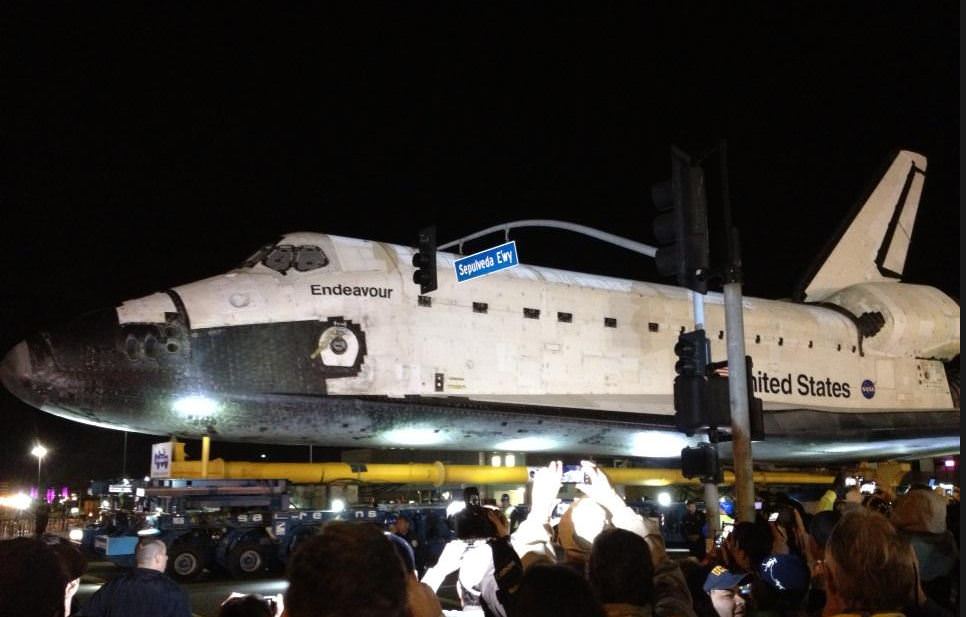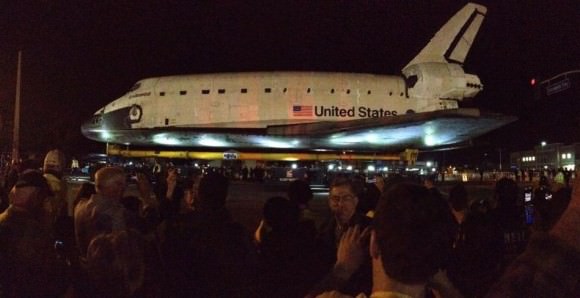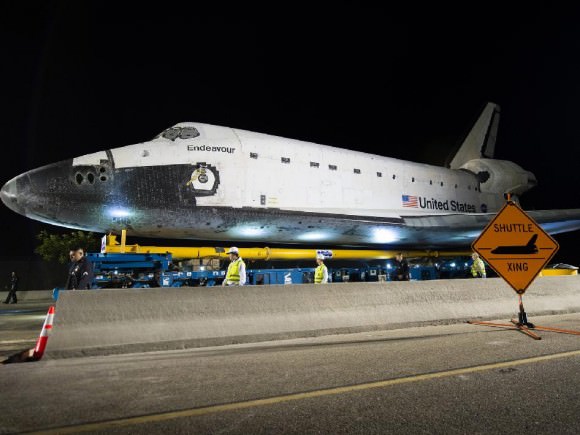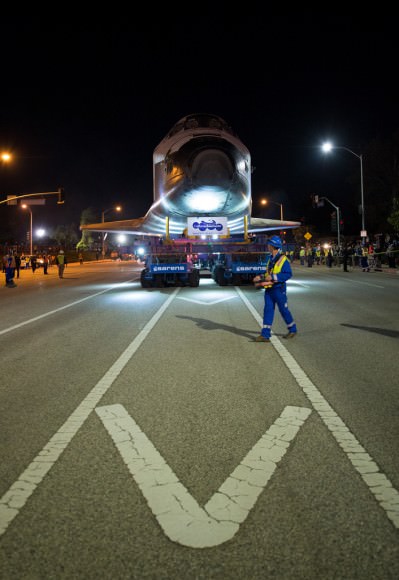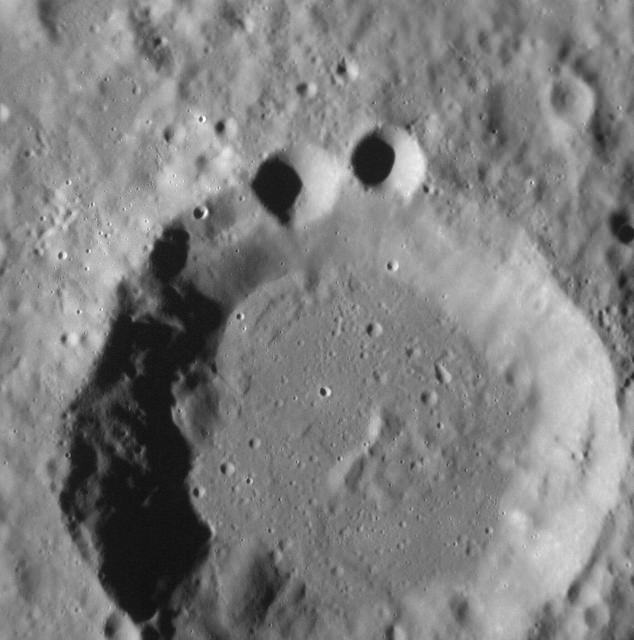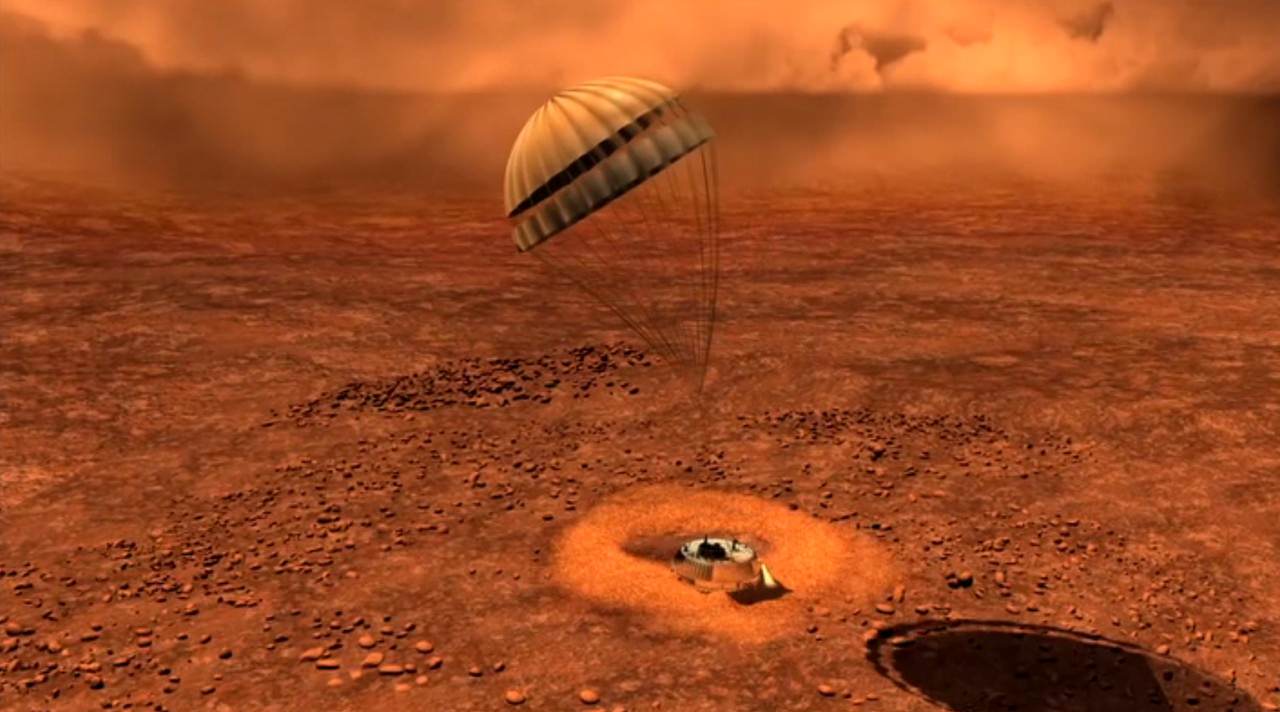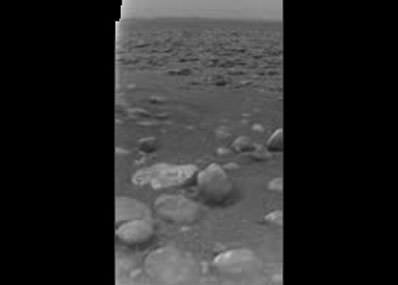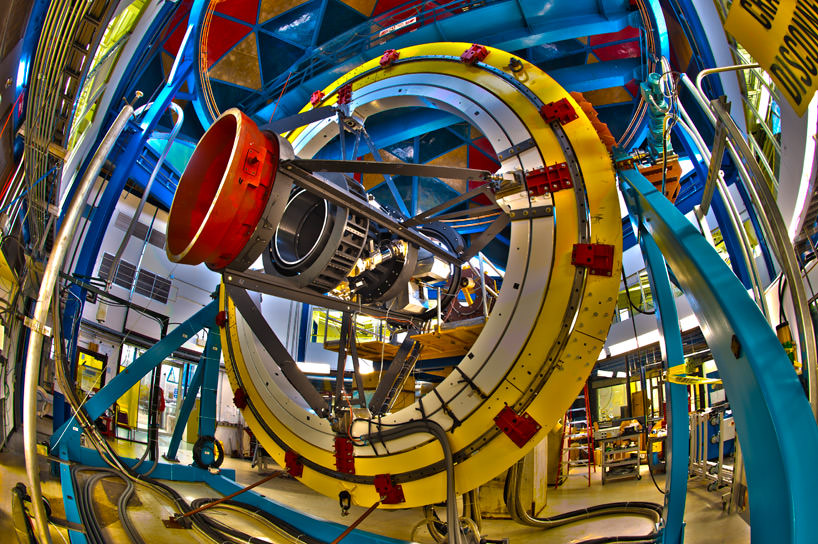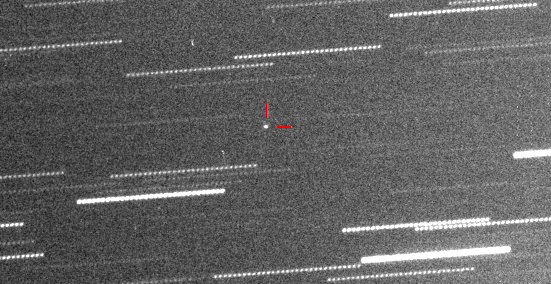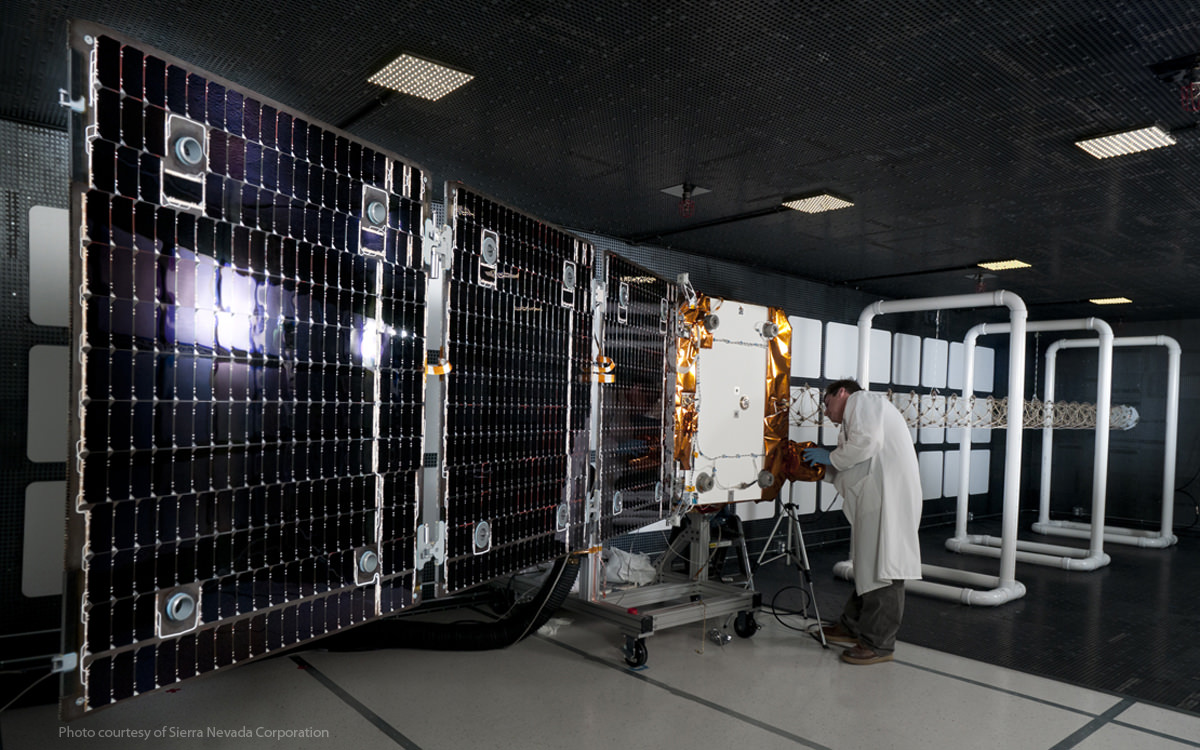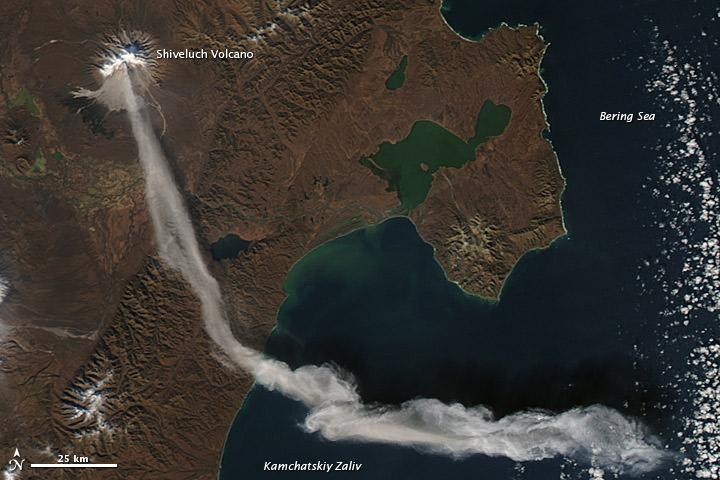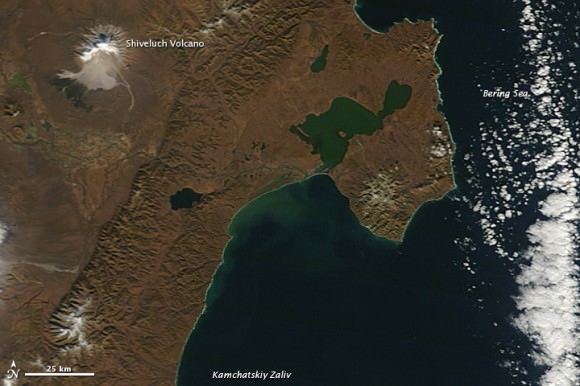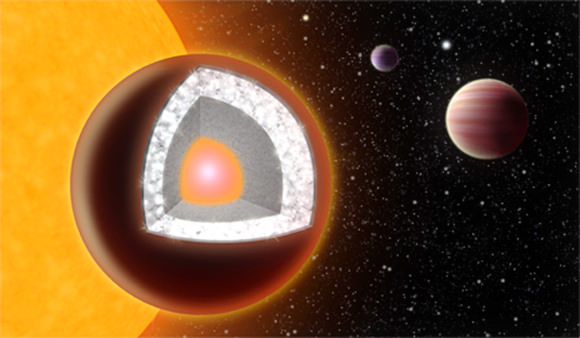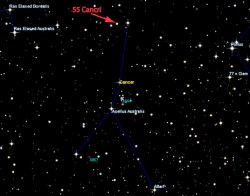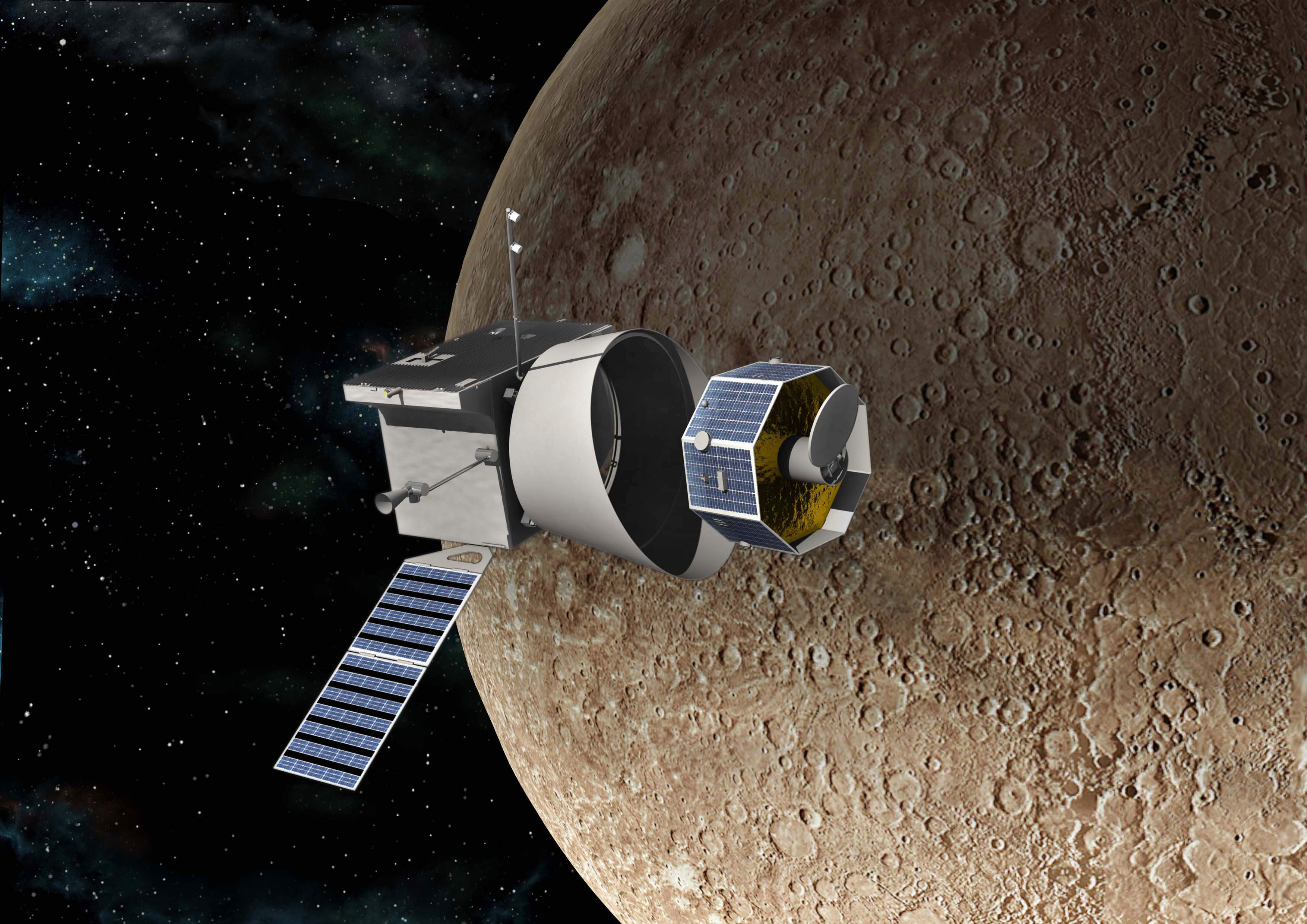Space Shuttle Endeavour on the streets of Los Angeles. Credit: Scott Maxwell
Why did Space Shuttle Endeavour cross the road? To get to the California Science Center, of course! About midnight local time, Endeavour began a 19-km (12-mile), two-day trip down the streets of LA as it moves from the Los Angeles International Airport to the its permanent museum home at the California Science Center. Thousands of people took the opportunity to see the rare sight of a space shuttle traveling down a street and waited in the predawn darkness to get a glimpse of the slow-moving shuttle — which topped out at speeds of 3.2 km/h (2 mph) instead of its usual 28,000 km/h (17,500 mph) when the space shuttle was in Earth orbit. Lots of onlookers snapped photos, including Scott Maxwell from JPL, one of the Mars rover drivers, who generously shared a few of his pictures, as its not everyday we get to see such sights. “Astonishingly, I think Endeavour was even slower than the rovers,” Scott said via Twitter. “Not when in motion, but it took *lots* of breaks.”
See more images from Scott and NASA below:
“Maybe this panorama will give you a sense of the excited, bustling crowd around Endeavour,” said photographer Scott Maxwell.
See Scott’s Twitter feed for more images and comments about his early-morning shuttle-watching experience.
There were lots of Tweets about Endeavour’s journey, but this might be the best picture showing the shuttle in amongst the regular goings on in LA:
Now this is cool!! Endeavour tight squeeze twitter.com/CNNkimsegal/st…
— Kim Segal CNN Miami (@CNNkimsegal) October 12, 2012
The space shuttle Endeavour is seen atop the Over Land Transporter (OLT) after exiting the Los Angeles International Airport on its way to its new home at the California Science Center in Los Angeles, Friday, Oct. 12, 2012. Credit: NASA/Bill Ingalls
The driver of the Over Land Transporter, who uses a joy stick to control the shuttle, is seen as he maneuvers the space shuttle Endeavour on the streets of Los Angeles. Credit: NASA/Bill Ingalls.
To make room for the five-story-tall shuttle and its 24-meter (78-foot) wingspan, about 400 trees were chopped down, overhead wires were raised, and steel plates were laid down to protect the streets and underground utilities.
Endeavour will mostly travel on wide boulevards. The cost of the move is estimated at $10 million.
You can read more details in this Yahoo News article.
And I totally stole the headline from NASA’s Bob Jacobs from his comments on Twitter.

